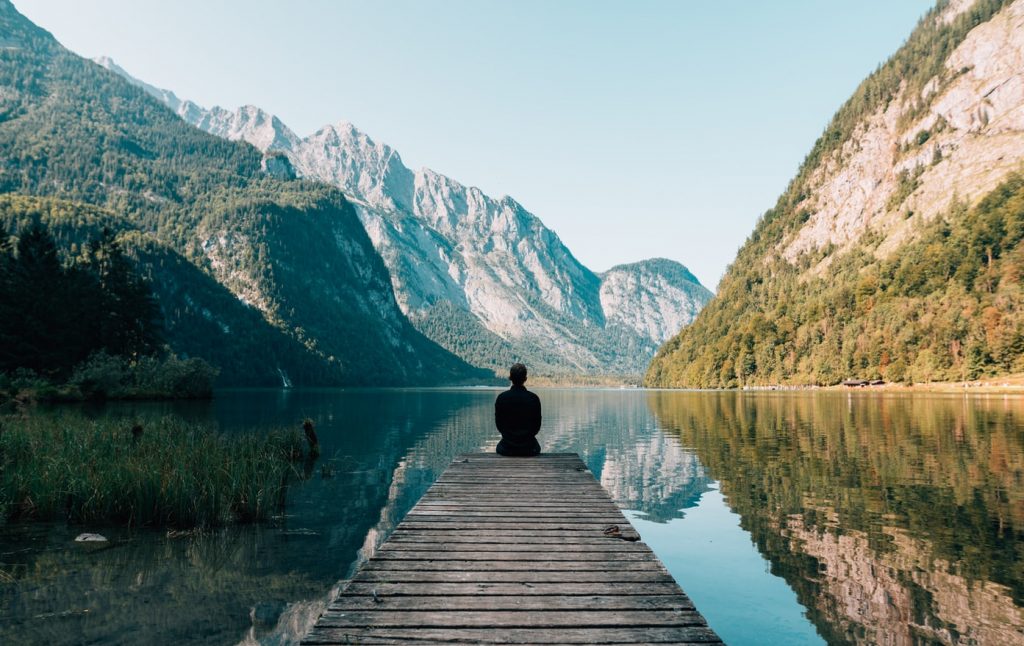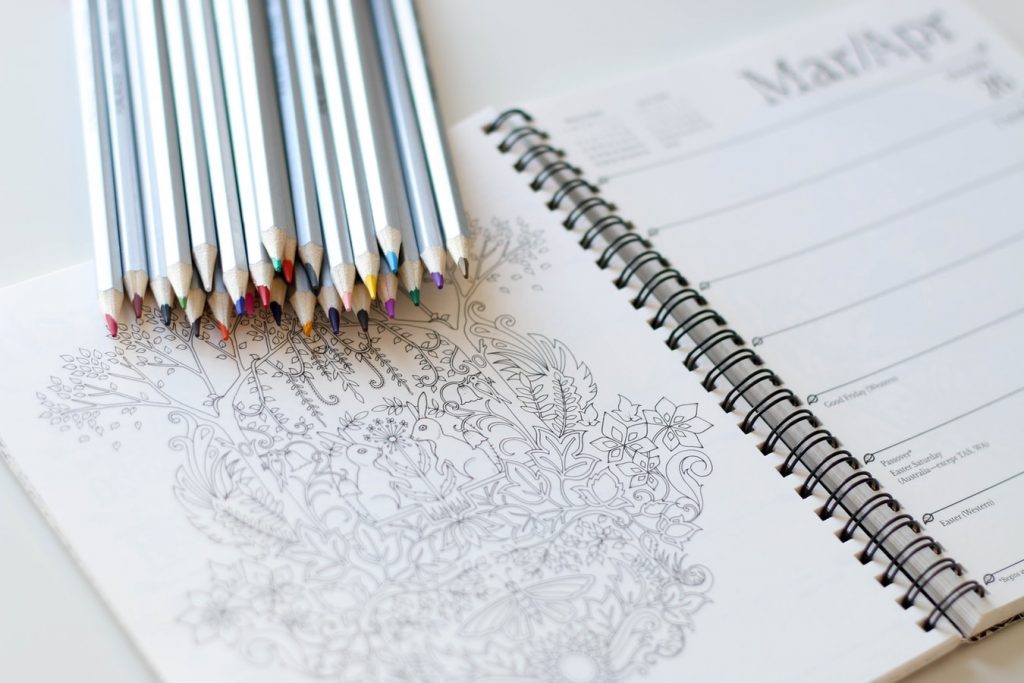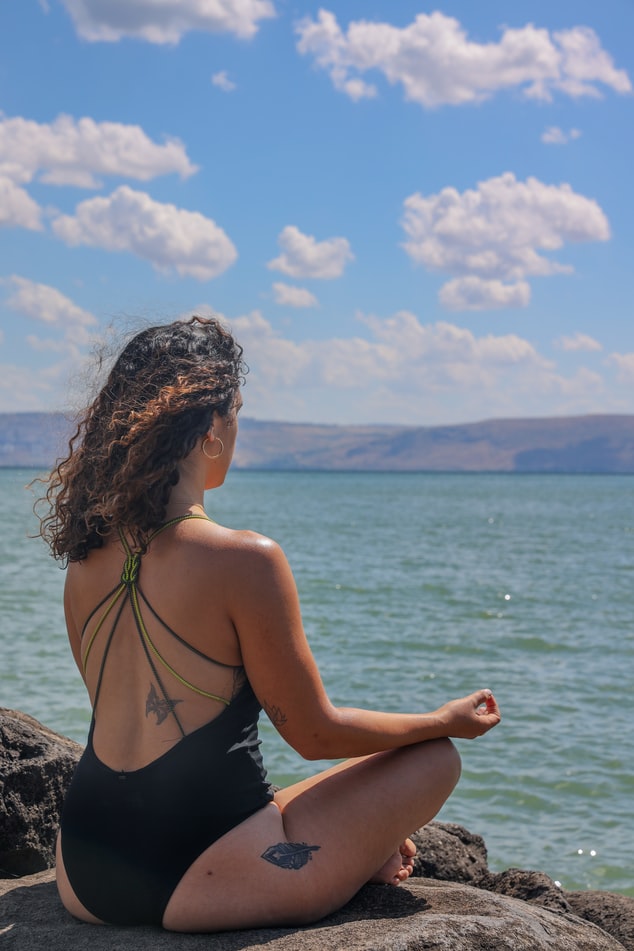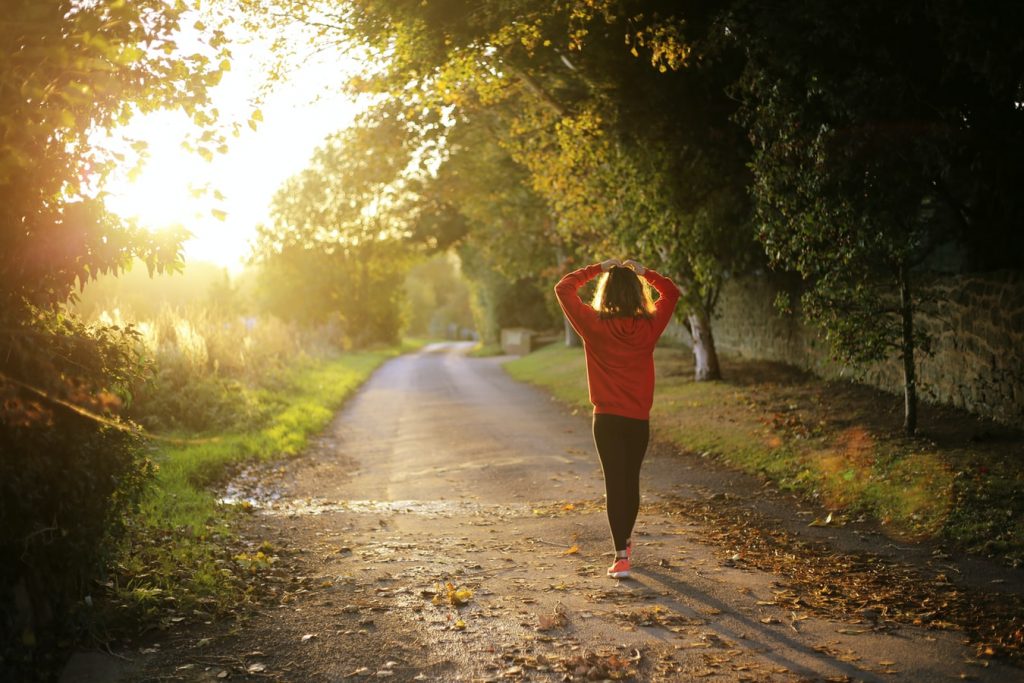
When was the last time you disconnected? From your phone, social media, your work or any stress that has been consuming you.
It can be hard to pinpoint, right? When we are stressed, it’s easy to convince ourselves that working harder will solve our problems but the truth is; it escalates them. When we do finally seek some downtime, we opt for screen time in hopes to be ‘social’.
This habitual cycle of modern life can take its toll and we start to experience low moods and form a negative outlook on the world. This is where mindfulness will transform your journey!
What is mindfulness?
Mindfulness means to see clearly. The reason we want to ‘see clearly’ is so we can respond effectively.
Have you ever had a really bad day and everything gets to you? I know I have! Sometimes in these moments, we let our emotions control our actions. We often say things we regret, to strangers or our loved ones. By practising mindfulness we are able to think openly and see more clearly. This may manifest in a variety of ways, for example, you may experience more kindness towards other people, gratitude for your life and a newfound perspective in situations that would’ve usually set you off.
How mindfulness can transform your life

Before we dive into how you can practise mindfulness, let me tell you about all the wonderful benefits!
Health benefits:
- Stronger immune system
- Decreased stress
- Lower cortisol (fuels our flight or fight instincts)
- Better sleep
Cognitive Capacities:
- Improved focus & attention
- Improved memory
- Improved creativity & innovation
Other benefits:
- Improves ethical decision making
- Reduces cultural bias
- Increases compassion
I know what you’re thinking…. how on earth does mindfulness actually do this?
The answer? Neuroplasticity.
Neuroplasticity refers to the malleable nature of our brains and our ability to change them. Thanks to a little something called, cortical thickening, as we practise mindful activities our brains grow new neurons in response to repeated activity. What you practise grows stronger

But what does this actually mean? – The purpose of mindful activities, such as meditation, work by putting us in a calm grounded state of awareness. Meditation comes with its own benefits that we will cover in a separate post, but the more we practise this and experience the effects, the more neurons grow. That calm, aware state becomes habitual and eventually, we experience that awareness in our day to day lives.
You can use this ideology within many walks of life, whether you practise kindness, compassion or love, the more you practise, the more you’ll experience those emotions. While this is astounding work, it’s important to recognise that this works both ways! If we practise, self-hate, judgement, and negativity it will grow, manifest, and we respond to life with a negative lens.
Why is it important to have an awareness of our thoughts and actions? Increasing our awareness allows us to see more clearly and respond effectively. Instead of giving in to your burst of anger, you can take a conscious pause to assess, if your anger is justified and the right course of action. As you practise mindfulness more, you will respond to life with an open mind and a clearer view of the bigger picture.
Having awareness of our thoughts is equally important, as we can choose to change our mindset and focus on more positive emotion.
Who is mindfulness for?
The short answer- anyone! There are so many ways to practice mindfulness and it’s easy to find something that works for you.
How to practise mindfulness

Firstly, it’s never too late to start a mindfulness practice. Everyone is working on their own timeline and will find their calling at different times. ‘Wherever you are is the entry point’ – KabirAs we mentioned above, what you practise grows stronger. Below I have suggested some wonderful mindfulness practises that will enrich your life and start your journey. I recommend doing one or more of these practices daily. Consequently, the benefits of your practice will strengthen over time.
Keep It Simple
When approaching mindful activities, I have found it helpful to keep it simple and not over complicate it. These practices are there to enjoy and, often, help you incorporate a little more self-care into your life!
Mindfulness Activities
Mindful activities can take many shapes and forms, these are a few practises that’ll get you started.
Mindful Colouring

We all love a good adult colouring book! While it may seem trivial, these colouring books can be a great mindfulness tool. The process of colouring can be especially calming for some people. You have heard people saying it feels ‘therapeutic’ because it allows you to focus on one thing at a time and slow down your racing brain.
You may like to enjoy a session of mindful colouring with some soft music and a diffuser full of essential oils! Try focusing on the way your pen glides across the page, the noises that are dancing around you and the aromas engulfing your senses. This process of slowing down and focusing on the activity will increase your awareness and put you into a calm state of mind.
Breathing Exercises
Breathing exercises can be used in a moment of need, such as an anxiety attack or when you feel overcome with anger. They will help to give you a moment of pause to gather yourself and to choose how you move forward in your situation.
There are many guided exercises you can find online and they help you focus on the quality of air in the room, your breath and ground you in the present moment.
Yoga with Adriene on Youtube has lots of helpful breathing exercises for you to try, such as alternative nostril breathing, which is ideal for a moment for anxiety.
The Name Game

A quick game to bring you calm and clarity.
If you’ve experienced feelings of anxiety, the name game will be a great tool to use. In a moment of need, simply find:
- 5 things you can see
- 4 things you can hear
- 3 things you can smell
- 2 things you can feel
- 1 thing you can taste
You can apply this to many moments! For example, next time you drink a cup of tea have a moment to take it all in. Close your eyes and focus on what sensations you’re experiencing. What does it smell, taste, and feel like?
This short activity will divert your attention aware from anxious or negative thoughts and bring you back to the present moment.
Meditation

Meditation is a popular mindfulness practice and has many uses. This versatile activity has so many variations, including but not limited to: guided meditations, candle meditation, body scans and affirmation meditation. This is one of the best ways to practise mindfulness as it puts you in a state of awareness and complete calm allowing you to be fully present in the now.
If you’re new to meditating, I suggest trying guided sessions to learn the basics of the practice.
When meditating, experts recommend 12 minutes a day to benefit from it long term. However, if you’re new to this I suggest starting by making a commitment to doing 1-minute of meditation a day and increase it over time. Even a few mindful breaths can have a positive impact!
Gratitude lists
Gratitude is one of the most powerful tools of mindfulness. It can be used for mindfulness, manifesting or simply a great way to start your day! By using gratitude, it allows us to focus on all the goodness in our lives, rather than fixating on the negatives. The more we practice gratitude, the more we will see positivity and abundance around us.
Try this:Write a list of 10 things you’re grateful for, including why you feel grateful for it!
Example: I am so grateful for my magical body because it’s strong, healthy and helps me travel to different places!
With all my heart I am thankful that I have a loving community around me because it makes me feel loved and supported.
Morning Mind

This exercise is perfect when your brain feels a cluttered, cloudy and busy.
When you wake up, grab a journal or some paper and write down anything and everything that comes to your mind. Your writing doesn’t need to be poetic or revolutionary, simply let your thoughts stream onto the paper.
Letting your thoughts flow naturally, without judgement, is a beautiful way to simply have awareness of what you’re feeling and not why you’re feeling it. We often get caught up in why something has happened to us, or why we are feeling a certain way. This practice takes away that element and allows us to observe in a neutral space.
Within mindfulness, there are some overarching themes; one of these is self-kindness. Below is a simple exercise you can try at home!
Self Kindness Practise
- Each morning, when you wake up, place your hand over your chest. By doing this, it will release oxytocin, one of your happiness hormones!
- With your hand on your chest, say: ‘Good morning [Your Name]’
- It may feel silly at first but remember what you practise grows stronger!
- When you feel comfortable with that and you have practised for a couple of days or weeks, I want you to change the saying to, ‘Good morning, I love you, [Your Name]’.
Over time you will get used to saying it and you will really feel that love! Stick with it and let me know how you get on!
If you’re facing a low time, I made a blog post on staying positive and it has some useful mediations at the end of the post that I highly recommend.
What activity will you try? Let me know in the comments!
With love from me to you x
Instagram – @ellie_desbaux Twitter – @ellie_des_baux

#Mindfulness#Spiritual#Highvibrations
Sources: The Great Courses Plus – ‘Master’s of Mindfulness’ course


